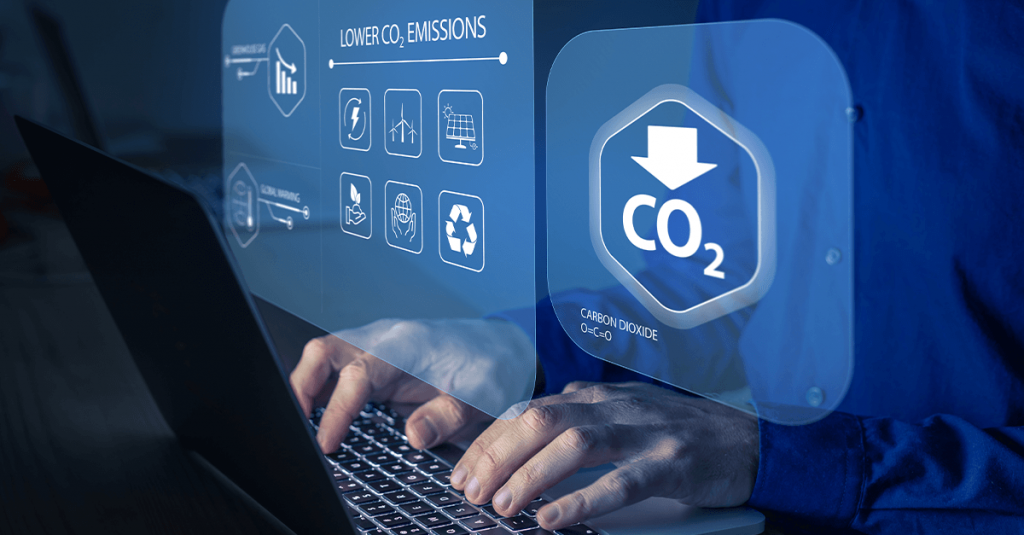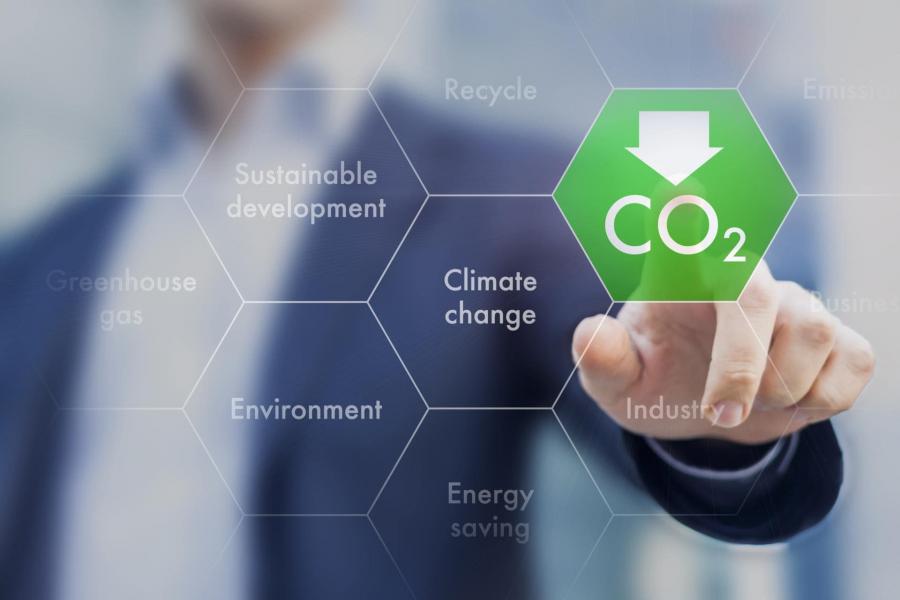
As global awareness of climate change intensifies, businesses across various sectors are feeling the pressure to adopt sustainable practices. One transformative solution taking center stage in this movement is carbon management software. By providing the tools necessary for tracking, managing, and reporting carbon emissions, this innovative technology empowers organizations to not only comply with regulations but also actively participate in the global effort for environmental sustainability.
What is Carbon Management Software?
Carbon management software serves as a technological solution that empowers organizations to effectively measure, monitor, and manage their carbon emissions and other environmental impacts. It offers several key features, including:
- A comprehensive platform for tracking emissions data.
- Tools for analyzing trends.
- Mechanisms for setting reduction targets.
- Strategies for mitigating environmental impacts.
This software is vital for helping organizations diminish their ecological footprint by providing valuable insights into their carbon emissions. Additionally, it facilitates the implementation of effective sustainability strategies aimed at reducing those emissions. With many countries and regions enforcing regulations that require businesses to report and diminish their carbon output, carbon management software equips organizations with the necessary tools and data to ensure compliance.
Furthermore, by pinpointing areas where energy and resources are inefficiently used, carbon management software can assist organizations in lowering costs related to energy consumption and enhancing overall operational efficiency. Adopting sustainable practices not only benefits the environment but also strengthens an organization’s brand reputation, making it more attractive to environmentally conscious consumers and investors.

Understanding the Need for Carbon Managment Software
Organizations today face a dual challenge: they must meet stringent regulatory requirements while simultaneously addressing growing consumer demand for transparency and accountability regarding environmental impact. Carbon management software addresses these challenges head-on, serving as a vital resource for companies aiming to measure, analyze, and reduce their greenhouse gas emissions.
By utilizing carbon management software, businesses can obtain valuable insights into their energy consumption patterns. For instance, companies can pinpoint high-emission areas within their operations, thereby identifying opportunities for improvement. Moreover, with precise tracking capabilities, organizations can monitor their emissions in real-time, facilitating proactive decision-making rather than reactive adjustments.
Key Features of Carbon Management Software
To effectively support organizations in their sustainability journeys, carbon management software must encompass a variety of key features. One of the most critical features is real-time data tracking. Unlike traditional methods that rely on periodic reporting, this functionality allows businesses to maintain constant vigilance over their emissions.
Another essential feature is robust reporting capabilities. Effective carbon management software should enable users to generate comprehensive reports that not only satisfy regulatory requirements but also serve internal purposes, such as assessing progress toward sustainability goals. These reports can inform stakeholders about emission reductions, improvement initiatives, and overall environmental impact.
Additionally, the integration of predictive analytics is a significant advantage of modern carbon management software. With this feature, businesses can forecast future emissions based on historical data and operational changes. By analyzing trends, they can set more accurate sustainability targets and make informed decisions about resource allocation and energy use.
How Carbon Management Software Benefits Organizations
The implementation of carbon management software provides myriad benefits to organizations. Primarily, it fosters transparency within the company and among stakeholders. By making emissions data accessible, businesses can showcase their commitment to sustainability. This transparency enhances trust between the organization and its consumers, particularly among those who prioritize environmental responsibility.
Furthermore, utilizing carbon management software empowers organizations to make informed decisions that can ultimately lead to substantial cost savings. By identifying inefficiencies in energy usage, businesses reduce their carbon footprints while simultaneously lowering operational costs. For instance, perhaps a company discovers that a certain manufacturing process consumes an excessive amount of energy. With the insights gained from carbon management software, the organization can explore alternatives or improvements, balancing resource efficiency with sustainability.
Moreover, using this software can position a company as a leader in corporate social responsibility (CSR). In today’s market, consumers prefer to support businesses that proactively address environmental concerns. By utilizing carbon management software and boldly reporting their progress in sustainability practices, companies can differentiate themselves from competitors and enhance their brand reputation. A strong commitment to reducing carbon emissions not only attracts like-minded customers, but it also opens doors to partnerships with other organizations that prioritize sustainability.
Choosing the Right Carbon Management Software
When it comes to selecting the right carbon management software, organizations should approach the decision strategically. Firstly, they need to thoroughly assess their specific needs and sustainability objectives. For example, a company with vast international operations may require more advanced features to manage emissions across multiple regulations and regions.
User-friendliness is another crucial consideration. The software should be intuitive and accessible to various team members, ensuring that everyone, from sustainability officers to operations managers, can effectively engage with the platform. Transitioning to a new system should not overwhelm the staff; thus, ease of use directly influences successful implementation.
Additionally, integration capabilities deserve careful consideration. Organizations often utilize existing software systems for various operational functions. Therefore, the selected carbon management software should seamlessly integrate with these systems, such as ERP or supply chain management software. This integration allows for more comprehensive data analytics and streamlined processes.
Security features cannot be overlooked, either. Sensitive data related to emissions must be safeguarded against unauthorized access and potential breaches. Organizations need to ensure that the carbon management software provider adheres to stringent security standards.
Finally, partnering with a reliable vendor can significantly enhance the implementation process. Engaging with experts dedicated to supporting carbon management provides invaluable guidance throughout the transition. These professionals can assist in customizing the software to meet the organization’s unique needs, responding quickly to challenges that may arise.
Development Steps of Carbon Management Software
Carbon management software plays a vital role in helping organizations measure and reduce their carbon emissions. Let’s explore the essential development steps involved in creating this software.
1. Needs Assessment and Integration:
First, identify the specific needs of users, such as businesses, governments, and non-profits. This step involves understanding their requirements and how the software can best serve them.
2. Data Collection and Integration:
Next, focus on collecting and integrating data related to carbon emissions. This includes information from various sources, such as energy consumption and transportation methods, ensuring a comprehensive view of emissions.
3. Carbon Calculation Algorithms:
Afterward, develop algorithms for calculating carbon emissions. These algorithms consider various factors, such as energy sources and consumption patterns, to provide accurate emissions data.
4. User Interface Design
Then, create a user-friendly interface for the software. This design should allow users to easily input data, view results, and analyze their energy usage, making the software accessible and intuitive.
5. Reporting and Visualization Tools:
Additionally, implement reporting and visualization features. These tools help users identify trends, track progress, and visualize emissions data, making it easier to understand and communicate results.
6. Ensure Data Security and Compliance:
Moreover, prioritizes data security and compliance with regulations. Carbon management software must protect sensitive information while ensuring that organizations meet legal requirements.
7. Deployment and Training:
Finally, deploy the software and provide training to users. This step is crucial to ensure that the software functions as intended and meets user needs. Continuous feedback will help improve the software over time.
By following these development steps, organizations can effectively build carbon management software that supports their sustainability goals.
The Future of Carbon Management Software
As sustainability continues to climb the agenda for businesses globally, the significance of carbon management software will only strengthen. This technology will evolve to incorporate more advanced features, such as artificial intelligence and machine learning, which can enhance predictive analytics capabilities. Such innovations will provide organizations with even deeper insights into their emissions patterns.
Conclusion
In conclusion, carbon management software has emerged as an essential tool for organizations dedicated to achieving sustainability and reducing their environmental impact. By investing in this technology, companies can effectively measure their carbon footprints, comply with regulations, and demonstrate their commitment to responsible corporate behavior. As we move deeper into a climate-conscious era, the role of carbon management software will undoubtedly become increasingly important, shaping a greener future for our planet.


